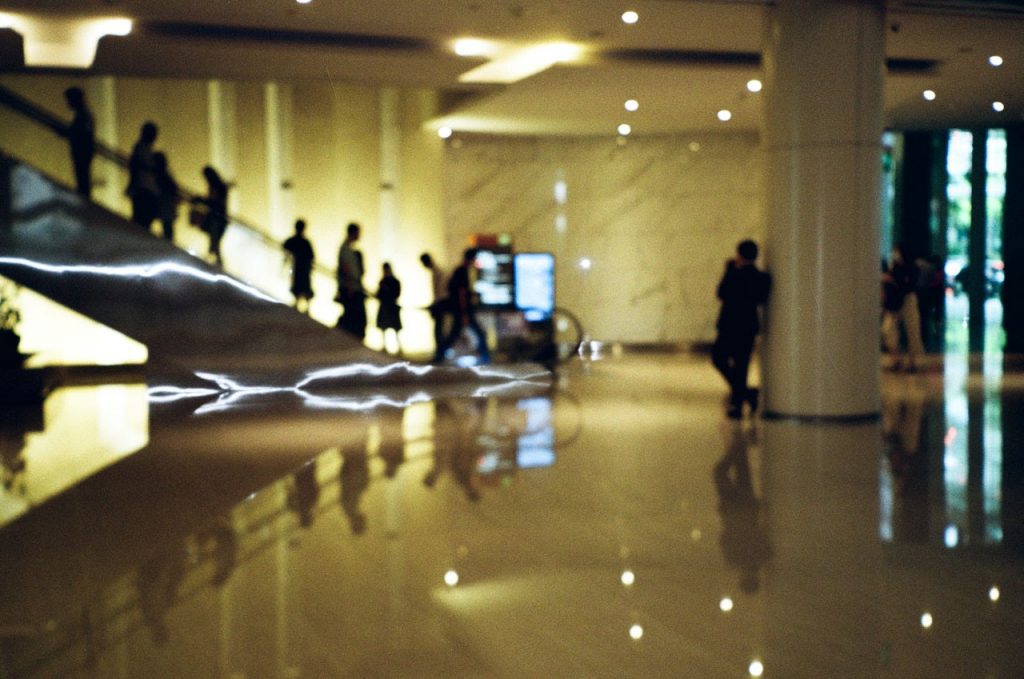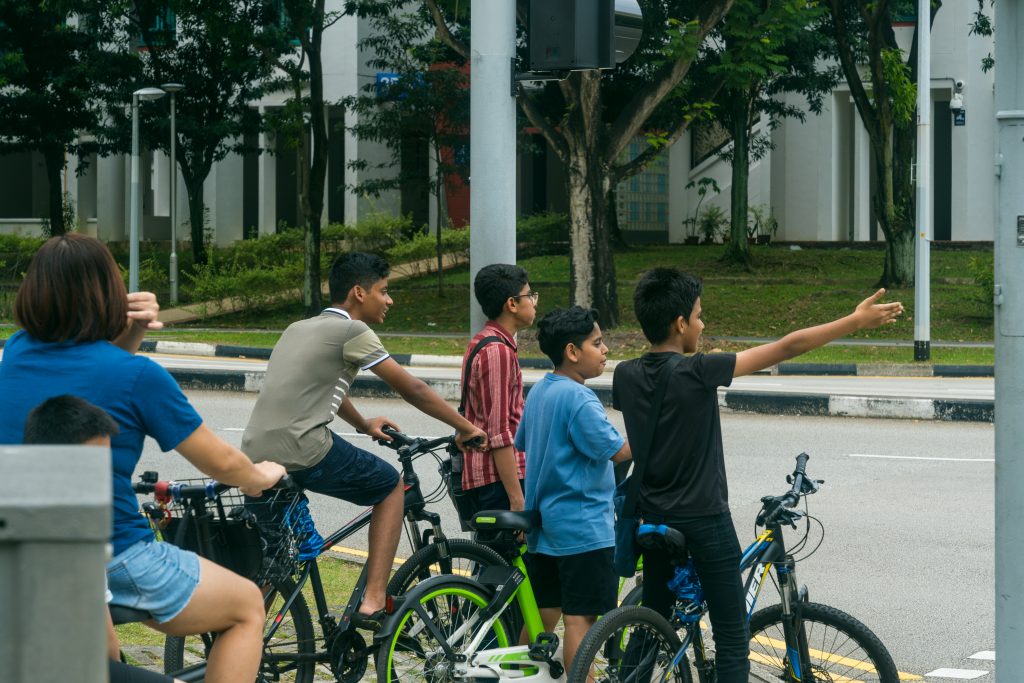Top image by Stephanie Lee for RICE Media
Earlier this year, the regulation of caffeinated energy drinks was proposed in Parliament, which is an issue that hits close to home for many Singaporeans like me.
I can’t deny that watching my friend Joe chug energy drinks in quick succession worries me. Joe works as a delivery man, and his job requires him to drive his van across Singapore for over 15 hours a day. Besides keeping him alert, Joe also needs the boost from these sugary drinks to carry heavy parcels up flights of stairs.
On some weekends, Joe and I moonlight as producers of live sports events. During which, Joe’s calling card—cans of Red Bull—unsurprisingly pop up across our AV control booth.
“Hydrate with water lah. You don’t need the Red Bull, this event is going to be smooth sailing,” I’d gently tell Joe while trying to mask my concern.
Joe, who is in his 30s, has made the informed decision to down energy drinks so that he can work, despite being cognizant of the abundant medical evidence condemning sugary caffeinated drinks.
Unfortunately, minors too have the same unbridled access to energy drinks, which are being promoted to them as drinks that all the cool kids are drinking. Energy drinks are a hit with students in Singapore too, especially when they’ve got loads of studying to do and not much time.
In a society that constantly reminds students about the importance of ‘good schools’ or even risk burnout before graduating, it’s no surprise that the pressure drives youth to quick-fix chemicals.

Electric Youth
Energy drinks are prominently advertised to young people—Monster Energy is the official sponsor of the X Games and Red Bull sponsors competitions involving youths like esports and breakdancing tournaments.
And with the advent of Logan Paul and KSI’s Prime, energy drinks have now been elevated to the tier of must-have hype accessories.
There has previously never been an age limit imposed on the purchase of energy drinks in Singapore. However, influencers marketing energy drinks like Prime to their followers—many of whom are impressionable pre-teens—have drawn new attention to the dangers of not regulating these beverages.
Most of us are aware of the physiological effects of ingesting too much caffeine: heart palpitations, headaches, seizures, stomachaches, hypertension, organ inflammation, neurological diseases and more.
In recent years, new research has linked them to tumour growth and cancer-causing bacteria. Cases of overconsumption leading to cardiac arrest and death continue to be reported around the world.
The physiological effects of high-caffeine sugary drinks, as you might imagine, have far more devastating consequences for young people whose bodies are still developing. Medical reports have noted that minors have been developing irregular heartbeats, gastrointestinal issues,and experiencing long-term effects on brain and emotional development, because of their consumption of energy drinks.
Prime has already been sued in US states like New York, over “misleading and deceptive practices”, because some of Prime’s 12-ounce energy drinks have been found to contain between 215mg to 225mg of caffeine, and not the advertised 200mg.
Nonetheless, energy drinks like Monster are attractively displayed in convenience stores like Cheers and supermarkets like NTUC FairPrice.

More Alert (to the Danger)
During the first Parliamentary seating of 2024, Nominated MP See Jinli Jean highlighted the health risks of high caffeine consumption on young people, and asked if the Ministry of Health will consider introducing measures to restrict the sales of energy drinks with high caffeine content.
This notion can lead to the passing of new regulatory laws, and make Singapore not the first, but the latest country to implement drastic measures to curb the energy drink crisis.
You might have heard that the UK’s Labour Party has also vowed to ban Under-16s from buying high-caffeine drinks if they win the election on July 4.
Canada has an 18+ recommendation for caffeinated energy drinks. Youths are carded when buying drinks in several European countries too—buyers need to prove that they are above 14 in Norway and above 18 in Romania, Lithuania and Latvia. France used to ban Red Bull and the maximum caffeine level for drinks allowed to be sold in New Zealand is 32mg per 100ml.
The hesitance of some countries to regulate sugar and caffeine is somewhat reminiscent of a time when alcohol and cigarettes weren’t regulated because medical evidence of their harmful effects was still preliminary.
By emphasising the positives of ‘energy’, brands distract us from the many physiological conditions that recent scientific research has linked these drinks to, such as the disruption of sleep cycles, lethargy and the exacerbation of ADHD.
Lack of sleep and short attention spans are prevailing problems among Singapore’s youths. Is that enough to push back against the normalisation of these drinks?

Organic Alternatives
Cherie Lui, Co-Founder of the alternative energy drink brand Flojo, has observed local students relying on sugary caffeinated drinks to get through their studies.
Marketed as a neuroscience-driven alternative to the usual energy drink staples, Flojo uses natural herbs like ginseng and reishi to heighten alertness and focus. Cherie will be one of four guest speakers sharing holistic health trends at a panel discussion entitled Alt Ctrl Health: Repackaging the Wellness Renaissance.
“When we spoke with local university students, some told us that when they face a time crunch, they drink Red Bull,” recounts Cherie. “When the time crunch is really bad, they drink Monster.”
A tall can of Monster Energy has about 160mg of caffeine. In comparison, a cup of coffee only contains 80mg to 100mg of caffeine.
Modern society has an insatiable thirst for more energy, which motivated Cherie and her co-founders (one of them is a neuroscientist) to research and create a healthier alternative based on neuroscience.
“This huge demand for more energy cannot be denied. People want to stay alert, but they want mental clarity without the heart palpitations.”
Cherie was inspired to concoct not only a healthier option, but also an organic pick-me-up that people of various ages can consume daily without fear of physiological repercussions.
This unquenchable ‘energy market’ has nurtured a hotbed of beverages and supplements that contain less caffeine, taurine, sugar, and artificial sweeteners, or none at all.
Flojo, for example, uses organic and sustainably sourced herbs like reishi, echinacea, rhodiola and cacao to heighten alertness. A can of Flojo contains 4.3g of sugar and 18mg of caffeine, with no synthetic compounds, compared to Red Bull’s 26g of sugar and 80mg of caffeine per can.
When students are pressed for time and consider energy drinks, organic alternatives like Flojo are a healthier option. They contain herbs like calendula and schisandra that are proven to alleviate stress.

Schooling Our Kids
However, you might agree that getting young people to reach for healthier alternatives is an uphill struggle.
Despite being sued, energy drink companies like Prime have deep pockets for fighting their battles—way deeper than those of startups that produce herbal alternatives. This has also enabled Prime to engage world-famous idols like Erling Haaland, Israel Adesanya and Central Cee as ambassadors.
Even if an age limit is imposed on the purchase of energy drinks, what’s stopping a primary school student from buying a litre of coffee? As authorities struggle to keep up with the regulation of newfangled beverages, perhaps protecting young people from damaging their own health starts with further education and a serious look at regulation.






